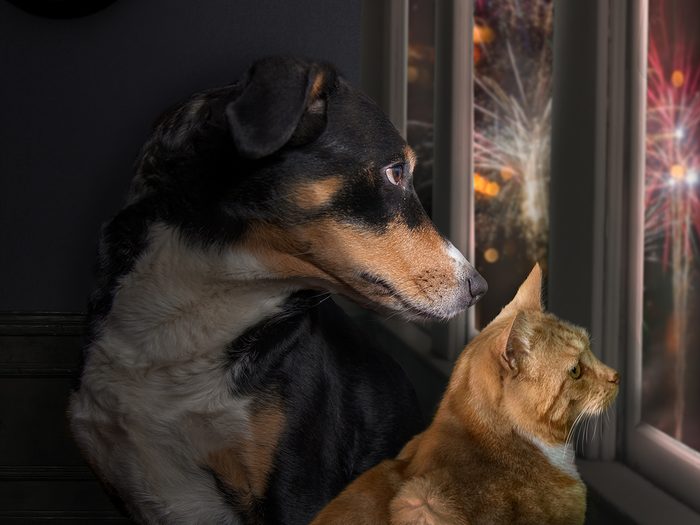
Quiet fireworks are gaining popularity
The pops and whistles that some fireworks make are due to the craftsmanship of chemists, who add metal tubes or flakes that hiss and sizzle as they burn. Of course, most fireworks go off with a loud bang, which many people (and animals) don’t enjoy. Newer “quiet” fireworks that don’t need as much energy to burst are already popular in Europe and are starting to catch on in North America—for instance, in Banff, Alberta, an area rich with wildlife. That’s good news for the animals.
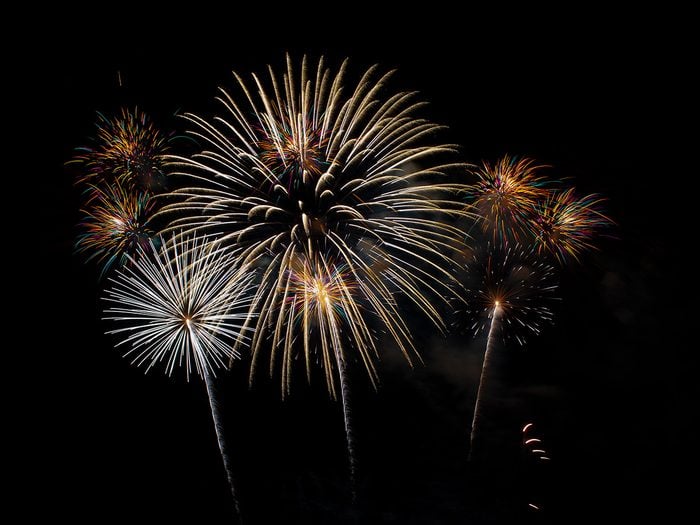
Made in China
There’s a good chance the fireworks you may be admiring this month—maybe at Canada Day celebrations on July 1st or Bastille Day in France on the 14th—were made in China: About 90 percent of the world’s fireworks are produced there. The biggest importer is the United States, which shipped in more than US$650 million worth in 2021. The annual fireworks budget of the Walt Disney Company alone is estimated at around US$50 million! By comparison, Canada imported CAD$21.5 million worth in 2021.
Find out 10 surprising things that are made in Canada.
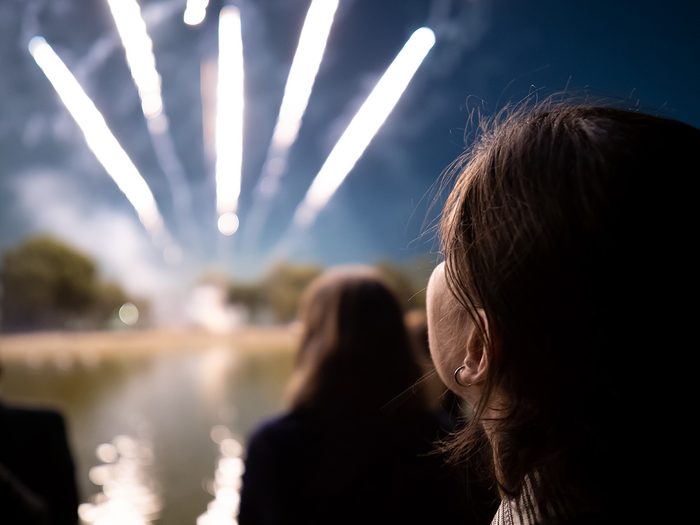
The origins of fireworks
Fireworks are Chinese in origin and are surprisingly ancient. The specific details of their invention are lost to history, but numerous folk legends try to fill in the gaps. According to one of them, a monk named Li Tian created fireworks around 1,400 years ago by packing gunpowder into hollow bamboo tubes. His purpose: to scare off evil spirits.
Here are 15 history questions people always get wrong.
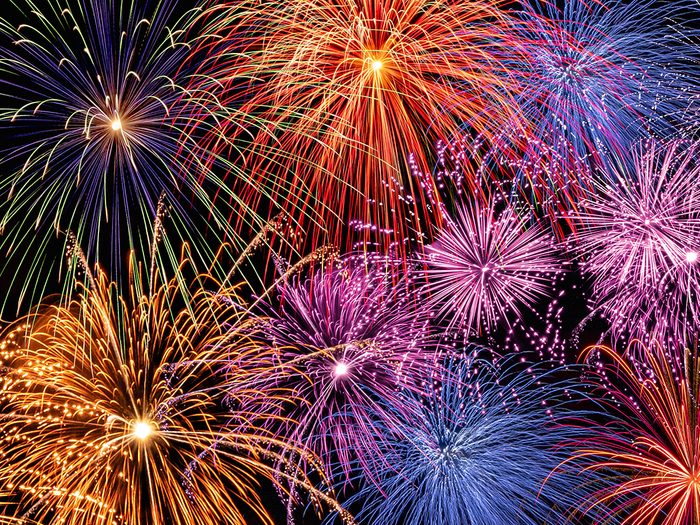
What makes those pretty colours?
An explosive mixture of gunpowder and flammable compounds is what makes fireworks splatter across the sky in all those pretty colours and fun shapes. Copper, for instance, burns bright blue; strontium sparks deep red. Together they produce purple. The pictures they make depend on the placement of these compounds inside the shell of the firework. Crowd favourites include “comet,” featuring a long trail of sparks; “peony,” a spherical, flower-like burst; and “strobe,” which produces a blinking effect.
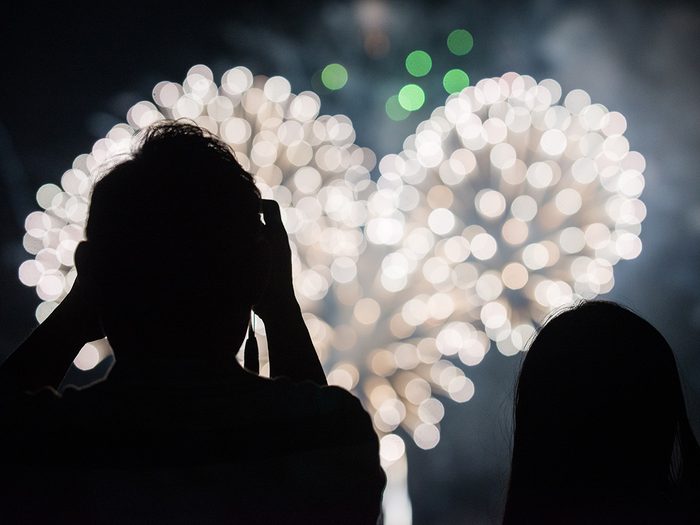
Adding shapes to the mix
Italians were the first to mix in extra metals to produce different colours in the 1830s. Before that, all fireworks were orange, the colour of fire. The patterns, however, are much more recent technology. The first patch of sky to see them was above Washington, D.C., in 1991, when the U.S. welcomed home troops from Operation Desert Storm with explosions of purple hearts and yellow bows.
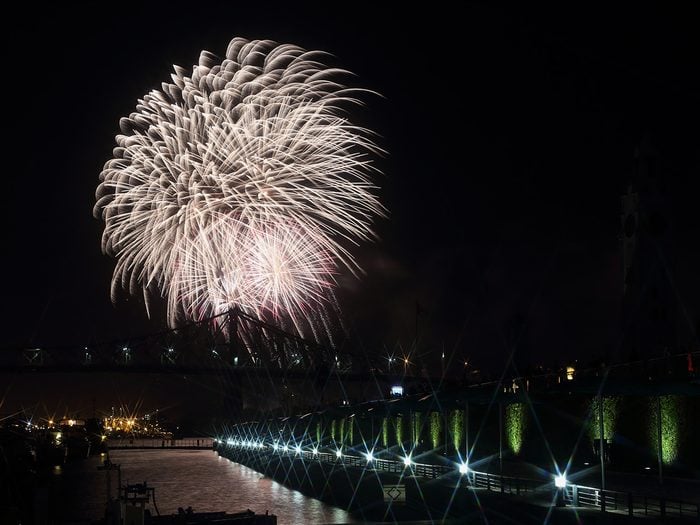
A pyrotechnic competition
Every summer, world-class pyrotechnic artists gather in Montreal for the world’s largest fireworks competition, L’International des Feux Loto-Québec. Roughly three million spectators watch as teams compete with themed musical programs such as “Bells and Drums” (Mexico’s lively entry last year) or “A Tribute to Prince,” which featured many shades of purple. There’s no cash prize, but winners take home trophies known as Jupiters—fittingly named for the Roman god of the sky and thunder.
Discover more great things to do in Montreal this summer.
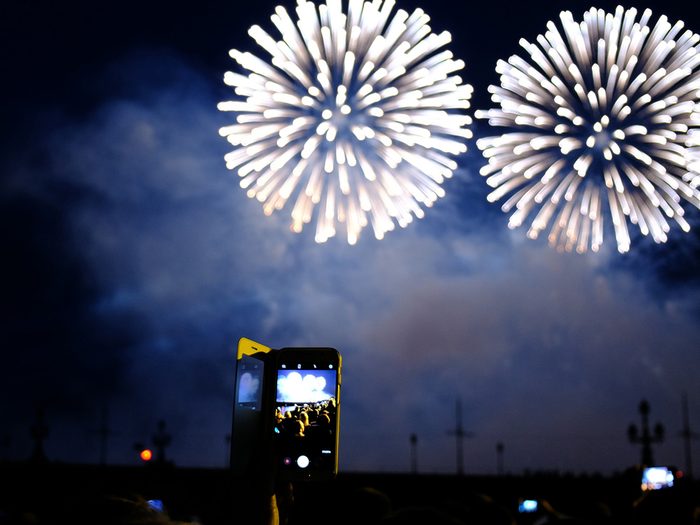
Fireworks-inspired tunes
We’re used to seeing firework displays paired with music. (Think “Auld Lang Syne” on New Year’s Eve.) But sometimes it’s the sparklers that inspire the tunes. George Frideric Handel’s joyous Music for the Royal Fireworks (1749) was composed to help mark the end of the War of the Austrian Succession. More than 150 years later, Claude Debussy’s “Feux d’artifice” (“Fireworks”) used the piano to evoke thrilling blasts with anticipation-filled pauses in between.
Here’s how “O Canada” became Canada’s national anthem.
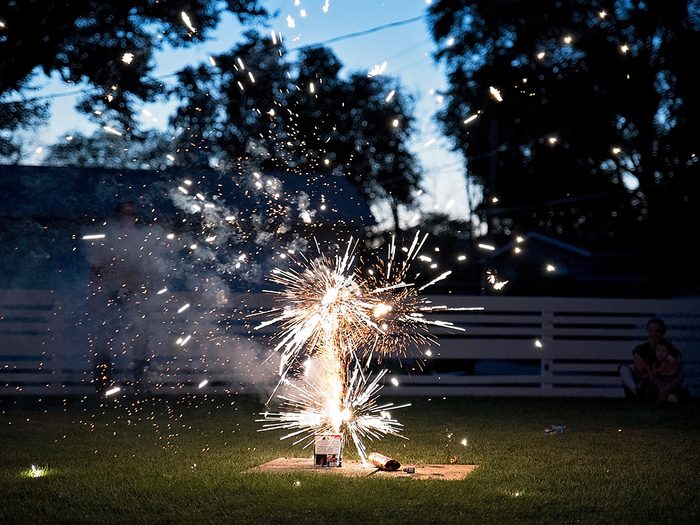
From backyards to automation
For centuries we had to light each firework fuse by hand to set it off, but since the 1980s, there’s been another option: computer-controlled igniters. Automating fireworks allows for more precisely timed explosions, making musical displays all the more synchronized and satisfying—not to mention safer.
Check out the best summer movies of all time.
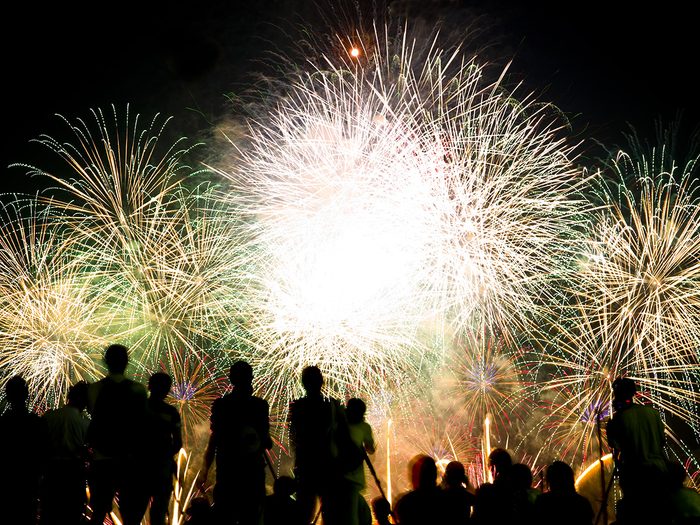
A display gone wrong
But it doesn’t always go according to plan. In 2012, a Fourth-of-July celebration in San Diego, California, went awry because of a computer glitch. A display that was supposed to last 18 minutes got compressed into less than one. First, the spectators were bombarded with clamour and light while roughly 7,000 shells exploded at the same time. Then they waited around, confused, for the rest of the show they’d been promised.
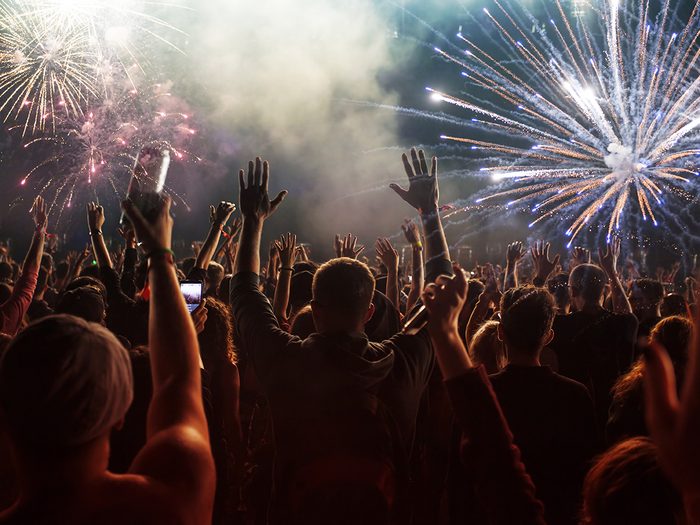
Fireworks for every occasion
Other holidays that prominently feature fireworks include Diwali, the Hindu festival of lights, and the United Kingdom’s Guy Fawkes Day. The latter event commemorates the failure of a plot to blow up London’s Parliament buildings with gunpowder in 1605. Fireworks serve to remind celebrators of the deadly explosion that was averted. Of course, fireworks are also a staple on New Year’s Eve, with notable displays in Dubai and Sydney.
Here are the 10 places in Canada that every Canadian needs to visit.
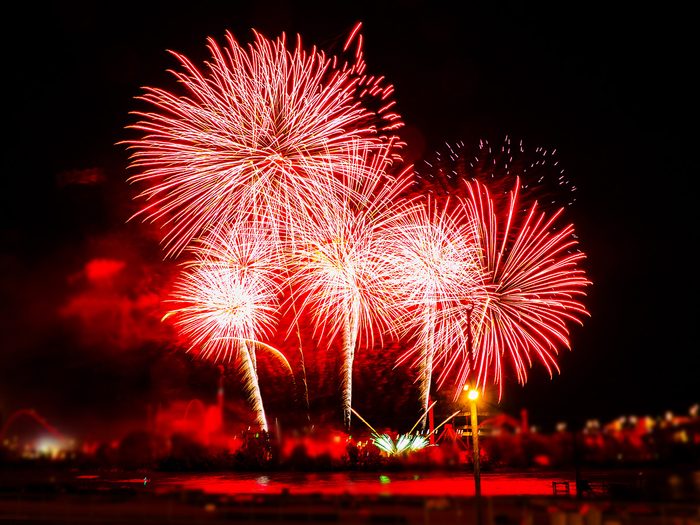
The biggest firework of them all
The single biggest firework shell ever shot was part of a winter-carnival display in Steamboat Springs, Colorado, in 2020, according to Guinness World Records. Weighing a hefty 1,268 kilograms, it rose more than a kilometre into the sky before bursting, turning the night sky red.
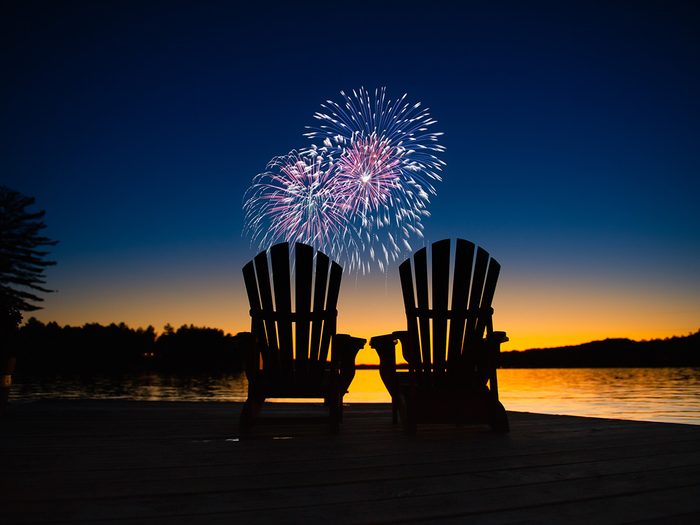
The rise of environmentally-friendly fireworks
As you might imagine, fireworks can release hazardous substances: potassium perchlorate, for example, a chemical that has been linked to thyroid problems. “Environmentally friendly” fireworks (that emit up to 65 percent less air pollution compared to regular ones) were developed at the request of the Walt Disney Company, which received smoke complaints in the 1990s from residents who lived near the California resort.
From harmful chemicals in shampoos to concealers, avoid these potential toxins in your daily grooming routine.
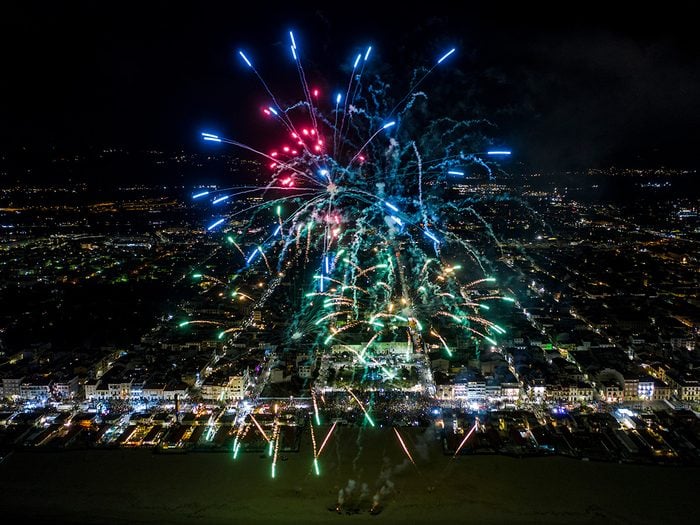
A robotic future?
An even greener alternative—recently adopted for Fourth-of-July festivities in Incline Village, Nevada, and Parker, Colorado—is using swarms of drones to trace flashy patterns in the sky. Another perk: there’s a much smaller risk of sparking wildfires. Disneyland Paris has begun using drones, and the industry is expected to grow by almost 20 percent between now and 2027. The future of fireworks, like so much else, may be robotic.
Looking for more quirky summer trivia? Check out these fascinating facts about flowers.